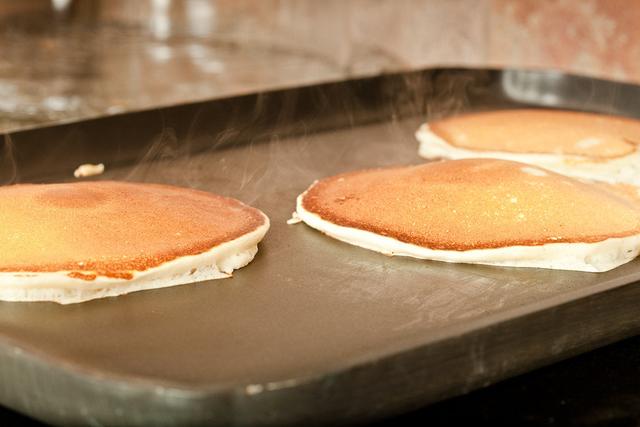A squirrel has four fingers on its front paws and five toes on its hind paws. This unique structure aids in climbing and grasping.
Squirrels are fascinating creatures found in various parts of the world. Their agility and dexterity allow them to navigate trees and urban environments with ease. These small mammals belong to the Sciuridae family and come in different species, including tree squirrels, ground squirrels, and flying squirrels.
Their diet primarily consists of nuts, seeds, fruits, and sometimes small insects. Squirrels play a vital role in forest ecology by aiding in seed dispersal. Understanding their physical characteristics, such as their fingers and toes, can help us appreciate their adaptability and survival skills.

Credit: animals.howstuffworks.com
Squirrel Anatomy
Squirrels are fascinating creatures with unique anatomical features. Their body structure helps them thrive in various environments. Understanding their anatomy offers insights into their agility and behavior.
Basic Structure
Squirrels have a small, slender body designed for speed and agility. Their bodies are covered in fur that varies in color. This helps them blend into their surroundings.
Their limbs are long and equipped with strong muscles. This allows them to jump and climb effortlessly. Each limb ends in tiny, sharp claws, which provide a firm grip on surfaces.
Squirrels have a long bushy tail. This tail helps them balance while navigating through trees. It also serves as a blanket during cold weather.
Common Traits
Squirrels have a total of 18 toes. Each front paw has four fingers and a small thumb. The hind paws have five toes.
| Body Part | Number of Fingers/Toes |
|---|---|
| Front Paw | 4 fingers + 1 thumb |
| Hind Paw | 5 toes |
Their sharp claws help in climbing trees and digging. Squirrels use their fingers to grasp and manipulate food.
Their teeth are another key trait. They have sharp incisors that grow continuously. This helps them gnaw on nuts and other hard foods.
Their eyes are large and placed on the sides of their head. This provides them with a wide field of vision. It helps them detect predators quickly.
Squirrels also have keen hearing and a good sense of smell. These senses help them locate food and communicate with each other.
Overall, a squirrel’s anatomy is perfectly adapted for its lifestyle. These traits ensure their survival in the wild.

Credit: www.facebook.com
Finger Count
Have you ever wondered how many fingers a squirrel has? These small creatures are quite fascinating. Their paws are designed to help them climb and grasp objects. Understanding their finger count can give insight into their amazing abilities.
Front Paws
Squirrels have four fingers on each front paw. These fingers are long and nimble. They help the squirrel grip tree branches. Each front paw also has a thumb-like structure. This structure isn’t a true thumb but helps in holding food and climbing.
Hind Paws
The hind paws of a squirrel have five fingers. These fingers are powerful and help in jumping and running. The toes on the hind paws are slightly longer. This helps in providing a strong grip on various surfaces. The extra finger on the hind paws gives them more stability.
| Paw Type | Finger Count |
|---|---|
| Front Paws | Four fingers (plus a thumb-like structure) |
| Hind Paws | Five fingers |
In summary, squirrels have four fingers on their front paws. They have five fingers on their hind paws. This unique finger count helps them in their daily activities.
Function Of Squirrel Fingers
Squirrels are fascinating creatures. Their fingers play a crucial role in their daily lives. These nimble animals have four fingers and a thumb on each front paw. Their back paws have five toes. Let’s explore the main functions of their fingers.
Grasping And Climbing
Squirrels are excellent climbers. Their fingers help them grasp tree bark securely. Strong claws at the tips of their fingers assist in climbing. They can easily move up and down trees. The flexibility of their fingers lets them hold on tightly. This ensures they don’t fall while climbing or jumping.
Foraging And Eating
Squirrels need their fingers to find and eat food. Their nimble fingers allow them to pick up small objects like nuts and seeds. They can peel off shells and husks with precision. Their fingers also help in holding food while they nibble. This makes their eating process efficient and effective.
Here’s a quick summary in a table:
| Function | Description |
|---|---|
| Grasping | Holding onto tree bark for climbing |
| Climbing | Moving up and down trees |
| Foraging | Picking up small objects like nuts and seeds |
| Eating | Peeling off shells and husks, holding food while nibbling |
Understanding these functions helps us appreciate how squirrels adapt to their environment. Their fingers are vital tools for survival.
Comparative Anatomy
Understanding the anatomy of squirrels offers fascinating insights into their survival. Their fingers and toes play a key role in their daily activities. Let’s explore how squirrel anatomy compares to other rodents.
Squirrels Vs. Other Rodents
Squirrels have unique anatomical features that set them apart from other rodents. One of these features is the number and structure of their fingers and toes.
- Squirrels: Squirrels have four fingers on their front paws and five on their back paws.
- Rats: Rats, similar to squirrels, also have four fingers on their front paws and five on their back paws.
- Mice: Mice share this same pattern, with four fingers on their front paws and five on their back paws.
Similarities And Differences
While many rodents share a similar finger and toe structure, there are differences in how they use them.
| Rodent | Number of Front Fingers | Number of Back Toes | Usage |
|---|---|---|---|
| Squirrels | Four | Five | Climbing, Grasping, Digging |
| Rats | Four | Five | Climbing, Running |
| Mice | Four | Five | Running, Burrowing |
Squirrels use their front fingers for grasping and climbing. This helps them move through trees quickly. Their back toes provide stability and strength.
Rats and mice use their fingers and toes differently. Rats are excellent climbers but are more ground-oriented. Mice are known for their burrowing capabilities.
Evolutionary Perspective
Have you ever wondered how many fingers a squirrel has? From an evolutionary perspective, the number of fingers can tell us much about a squirrel’s adaptations. Understanding these changes helps us see how squirrels survived and thrived over time.
Adaptations Over Time
Squirrels have evolved five fingers on each paw. These fingers have adapted for climbing and grasping. Their sharp claws allow them to grip bark and branches easily. This adaptation helps them find food and escape predators.
Their fingers are also flexible. This flexibility lets them manipulate objects and explore their environment. Over time, these features have helped squirrels become excellent climbers and foragers.
Environmental Influences
Different environments have influenced squirrel finger evolution. In forests, squirrels need strong fingers for climbing. Their habitat has dense trees and branches. Their sharp claws and strong fingers help them move quickly and safely.
In urban areas, squirrels have adapted to new challenges. They climb buildings and navigate through human-made structures. Their fingers help them balance and grip various surfaces. These adaptations show how squirrels thrive in different environments.
| Environment | Finger Adaptations |
|---|---|
| Forest | Strong, sharp claws for climbing trees |
| Urban | Flexible fingers for gripping surfaces |
In both settings, their fingers play a crucial role in survival. These adaptations highlight the importance of fingers in a squirrel’s life.

Credit: critterstop.com
Surprising Facts
Squirrels are fascinating creatures with unique physical traits. One of the most interesting aspects is their fingers. These tiny animals have evolved to have specific features that help them survive in their environments. Below, we explore some surprising facts about squirrel fingers.
Unique Finger Traits
Squirrels have four fingers and a thumb on each front paw. Their fingers are long and slender, which helps them grip tree branches and climb with ease. The thumbs are tiny and not very functional, but they still play a role in gripping objects.
Each finger has a sharp claw that aids in climbing and digging. These claws are retractable, allowing the squirrel to manage different tasks effortlessly. The structure of their fingers and claws is perfect for their arboreal lifestyle.
| Feature | Description |
|---|---|
| Number of Fingers | 4 fingers and a thumb on each front paw |
| Claws | Sharp, retractable claws on each finger |
| Thumbs | Small and less functional |
Interesting Behaviors
Squirrels use their fingers in many interesting ways. They use their claws to dig up buried nuts, which they often hide underground. These claws are also useful for peeling the shells off nuts and seeds.
They can rotate their ankles, allowing them to climb down trees headfirst. This unique ability is made possible by the flexibility of their fingers and claws. Squirrels also use their fingers to groom themselves, ensuring their fur stays clean and free from parasites.
- Digging up buried nuts
- Peeling shells off nuts and seeds
- Climbing down trees headfirst
- Grooming themselves
Understanding these finger traits and behaviors helps us appreciate these agile creatures even more.
Myths And Misconceptions
Squirrels are fascinating creatures. Their tiny paws and agile movements capture our attention. Many myths and misconceptions surround these small animals. People often wonder about their anatomy, especially their fingers. Let’s dive into the common myths and scientific clarifications.
Common Myths
Many believe squirrels have only four fingers. This is a widespread myth. In reality, squirrels have a different number of fingers on their front and back paws.
- Four-finger myth: People think squirrels have only four fingers. This is not true.
- Uniform paw structure: Some say squirrels’ front and back paws are identical. This is incorrect.
- Human-like hands: Another myth is that squirrels have hands like humans. Their paws are quite different.
Scientific Clarifications
Scientists have studied squirrels to understand their anatomy. Here are the facts:
| Front Paws | Back Paws |
|---|---|
| Four fingers and a small thumb | Five toes |
- Front paws: Squirrels have four fingers and a small thumb. The thumb is not very noticeable.
- Back paws: Their back paws have five toes. This helps them grip and climb.
Understanding these facts clears up many misconceptions. Squirrels are equipped to move and climb efficiently. Their unique paw structure helps them survive.
Importance Of Fingers
Squirrels have unique fingers that play crucial roles in their lives. These fingers help them survive, interact, and thrive in their environment.
Survival Skills
Squirrels rely on their fingers for many survival skills. Their sharp claws help them climb trees quickly. They can escape predators easily with this ability.
Their fingers also help them gather food. They can hold nuts, seeds, and fruits. This helps them store food for winter when food is scarce.
Strong fingers are vital for digging. Squirrels bury their food in the ground. They remember these spots and dig up their food later.
Interaction With Environment
Squirrels interact with their environment using their fingers. They use their sense of touch to explore. This helps them find safe places to live.
Their fingers are sensitive to textures. They can feel the bark of trees, helping them find the best climbing paths. This ensures they can move safely and efficiently.
Squirrels also use their fingers to communicate. They make signals and gestures with their paws. This helps them warn other squirrels of danger.
Here is a table showing the importance of squirrel fingers:
| Function | Description |
|---|---|
| Climbing | Sharp claws help climb trees quickly. |
| Gathering Food | Hold and store nuts, seeds, and fruits. |
| Digging | Strong fingers dig and retrieve buried food. |
| Exploration | Sense of touch helps explore the environment. |
| Communication | Use signals and gestures to communicate. |
Squirrels’ fingers are essential for their daily activities. They ensure survival and interaction in their environment.
Frequently Asked Questions
How Many Fingers Do Squirrels Have?
Squirrels have four fingers on their front paws and five toes on their back paws. This helps them climb and balance.
Do Squirrels Have Thumbs?
Squirrels do not have thumbs. They have four fingers on their front paws, which are used for gripping and climbing.
What Are Squirrel Fingers Called?
Squirrel fingers are referred to as digits. They use these digits for climbing, grasping, and manipulating objects.
Why Do Squirrels Have Different Numbers Of Fingers And Toes?
Squirrels have different numbers of fingers and toes to aid in climbing and balance. Their front paws are for grasping, and back paws help with stability.
Conclusion
Understanding a squirrel’s anatomy is fascinating. They have four fingers on each front paw and five on each hind paw. This unique feature helps them climb and forage efficiently. Next time you see a squirrel, you’ll appreciate their incredible adaptability even more.
Keep exploring nature’s wonders to uncover more intriguing facts.
Learn More About Grilling
If you want to learn more about grilling, check out these other helpful resources!





